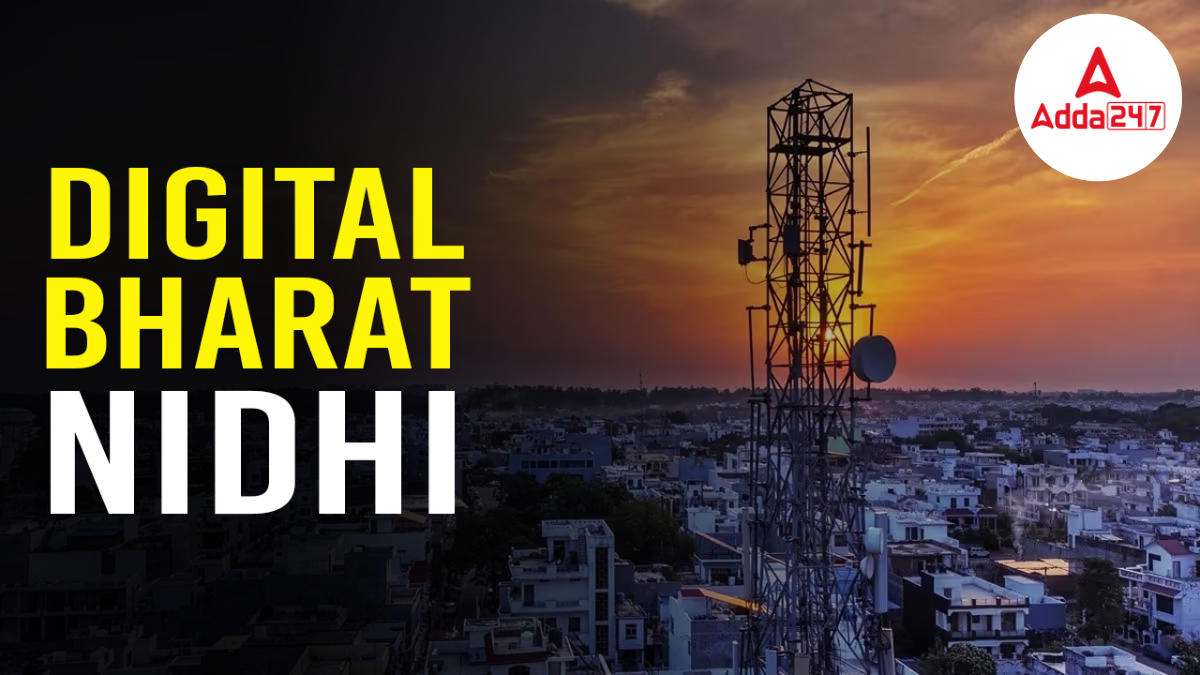Table of Contents
India is a fast-growing country with 8.2% GDP which is highest among all countries in the world but to be a devloped nation this number is required to be maintained and moreover we should work to increase it which is not possible without inclusion of the rural areas of India and the best way to onboard them is to provide them with connectivity for which government has rolled out Digital Bharat Nidhi. This article is important for government policies UPSC GS paper 2.
Digital Bharat Nidhi
Department of Telecommunication(DoT) has recently released draft rules for Digital Bharat Nidhi and is seeking for public feedback. The main objective behind the initiative is to increase telecom connectivity in rural areas. This project will be used to fund research and devlopment, pilot projects and to introduce new technologies.
Need for Digital Bharat Nidhi
Digital Bharat Nidhi was needed for improved telecom services in remote and rural areas, where private companies avoid working because of low customer reach, lack of infrastructure and low revenues leading to low profitability. Last month Telecommunication ACT 2023 was notified and implemented under which the government will use funds from Digital Bharat Nidhi, transforming Universal Service Obligation Fund (USOF).
Universal Service Obligation Fund (USOF)
Established in 2003 to enhance telecom service by 5% levy charged on Adjusted Gross Revenue (AGR) of telecom operators. It faces criticism for its inefficiency which can be proven with its utilization rates being 37% in 2019-20. Between 2017 and 2022, the government collected Rs 41,740 crore from telecom companies for the USOF, but only Rs 30,213 crore (about 72%) was utilized. In the 2019-20 fiscal year, Rs 7,962 crore was collected, but only Rs 2,926 crore was spent, resulting in a utilization rate of just 37%.
Digital Bharat Nidhi Roadmap
The funds collected from private companies as 5% over AGR will be credited to Consolidated Fund of India (CFI), all revenues recieved by government of India is credited to CFI and government also incurs its expenditure from CFI. The funds will be deposited to Digital Bharat Nidhi time to time when needed from CFI. Funds collected will be used to promote access of telecommunication services in rural and remote areas, research and devlopment and funding for innovations
Appointments
According to the rules issued by DoT centre will appoint an administrator, who will be responsible for selecting Digital Bharat Nidhi implementers through bidding and applications.
The administrator will be responsible for allocating and determining funds requirement for implementers to exeute on ground operations for devlopment in the rural and remote areas.
Other Goals of DBN
Digital Bharat Nidhi aims not only to devlop infrastructure and invest in R and D but also to help provide funds for schemes and projects providing targeted access of telecommunication services to women, people with disability, economically weaker sections, students.
It will also contribute to next generation telecommunication technologies and achieving affordability for rural and remote areas. Encouraging start ups and manufacturers will be among other goals to be met by Digital Bharat Nidhi



 TSPSC Group 1 Question Paper 2024, Downl...
TSPSC Group 1 Question Paper 2024, Downl...
 TSPSC Group 1 Answer key 2024 Out, Downl...
TSPSC Group 1 Answer key 2024 Out, Downl...
 UPSC Prelims 2024 Question Paper, Downlo...
UPSC Prelims 2024 Question Paper, Downlo...




